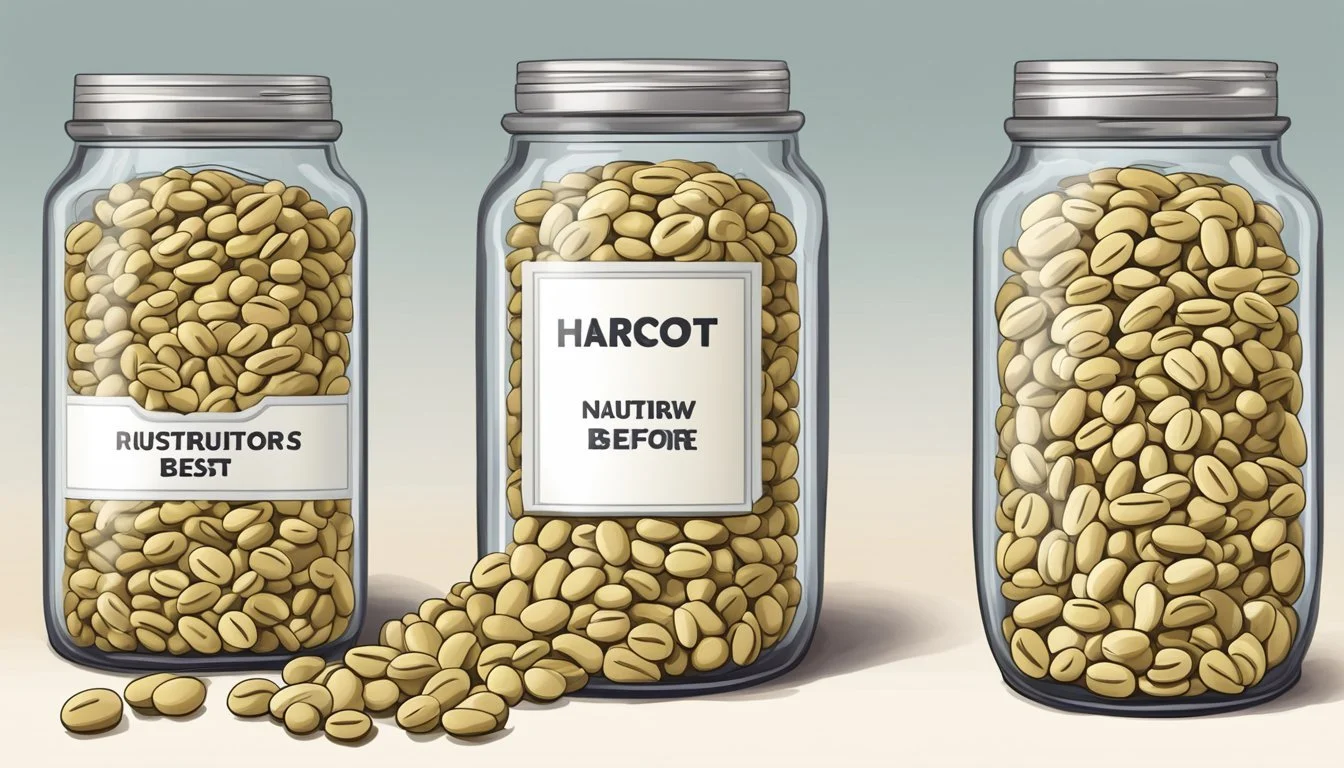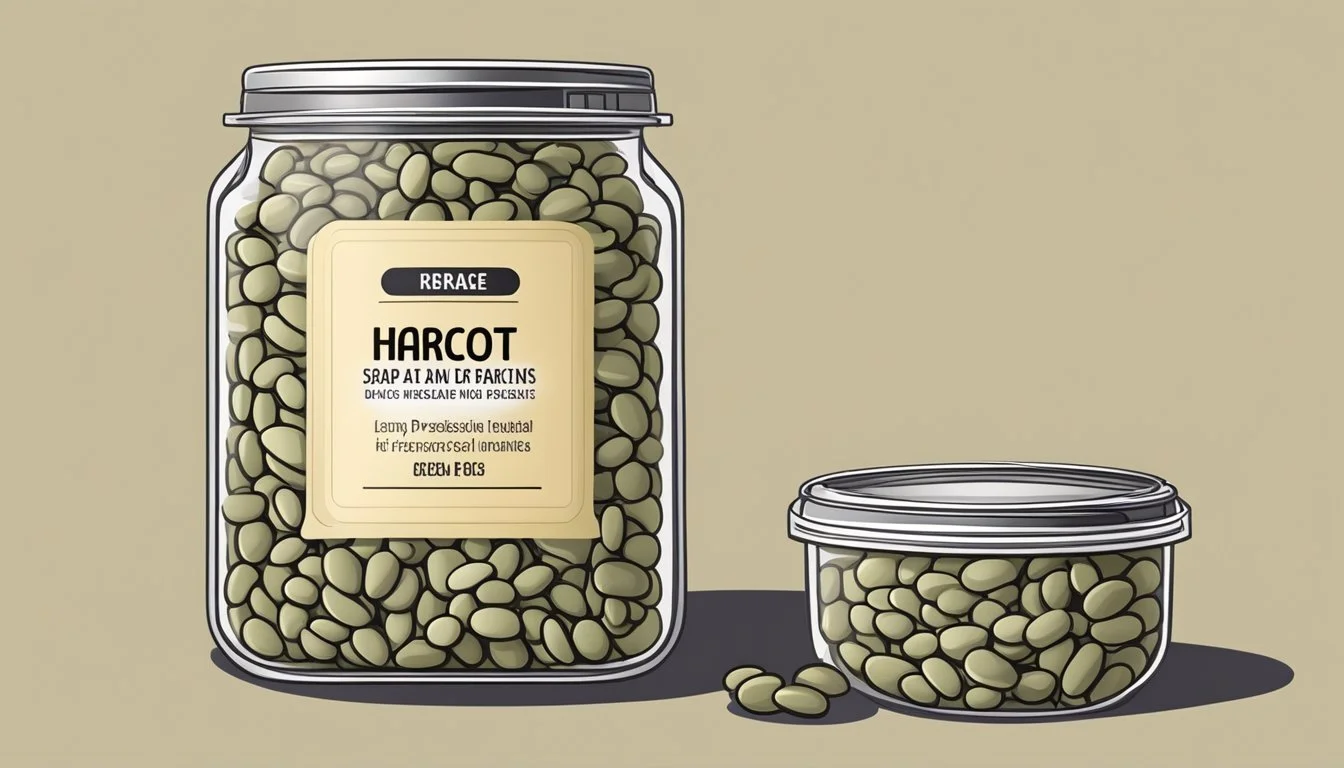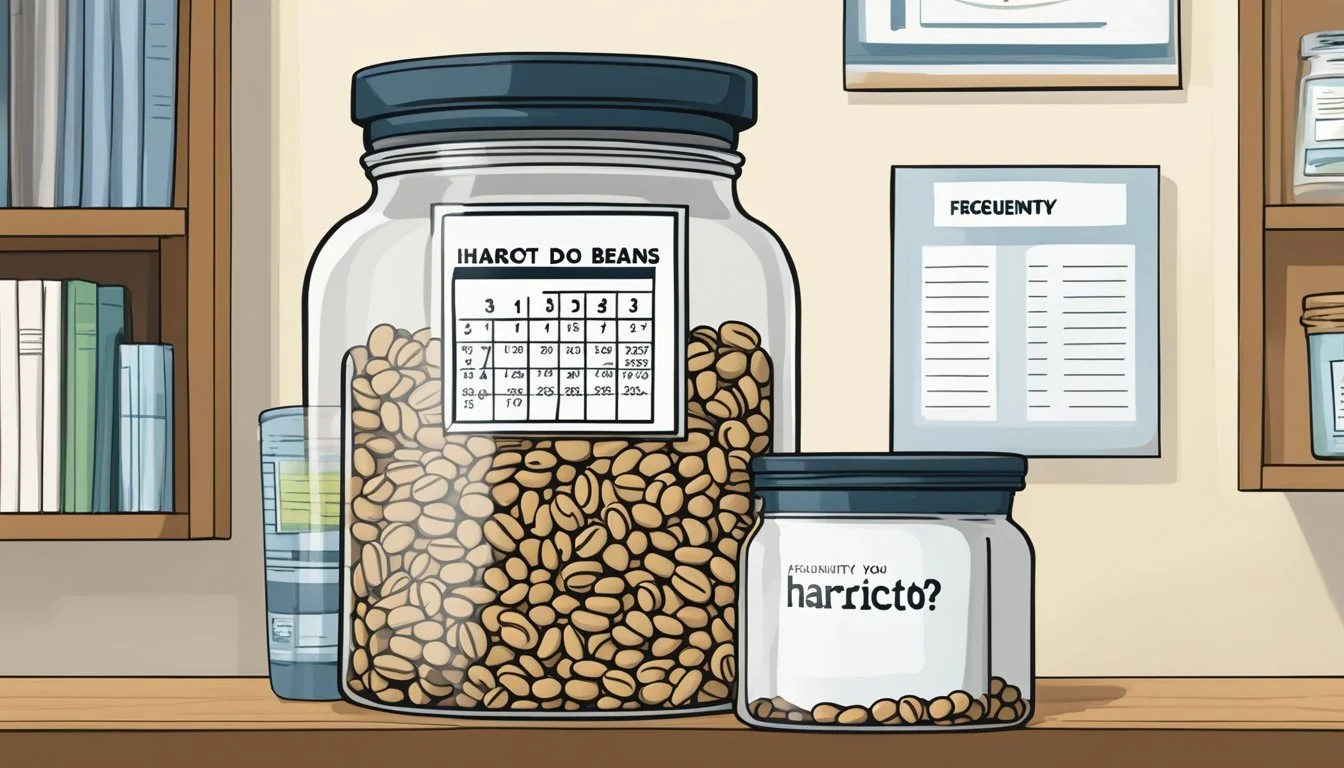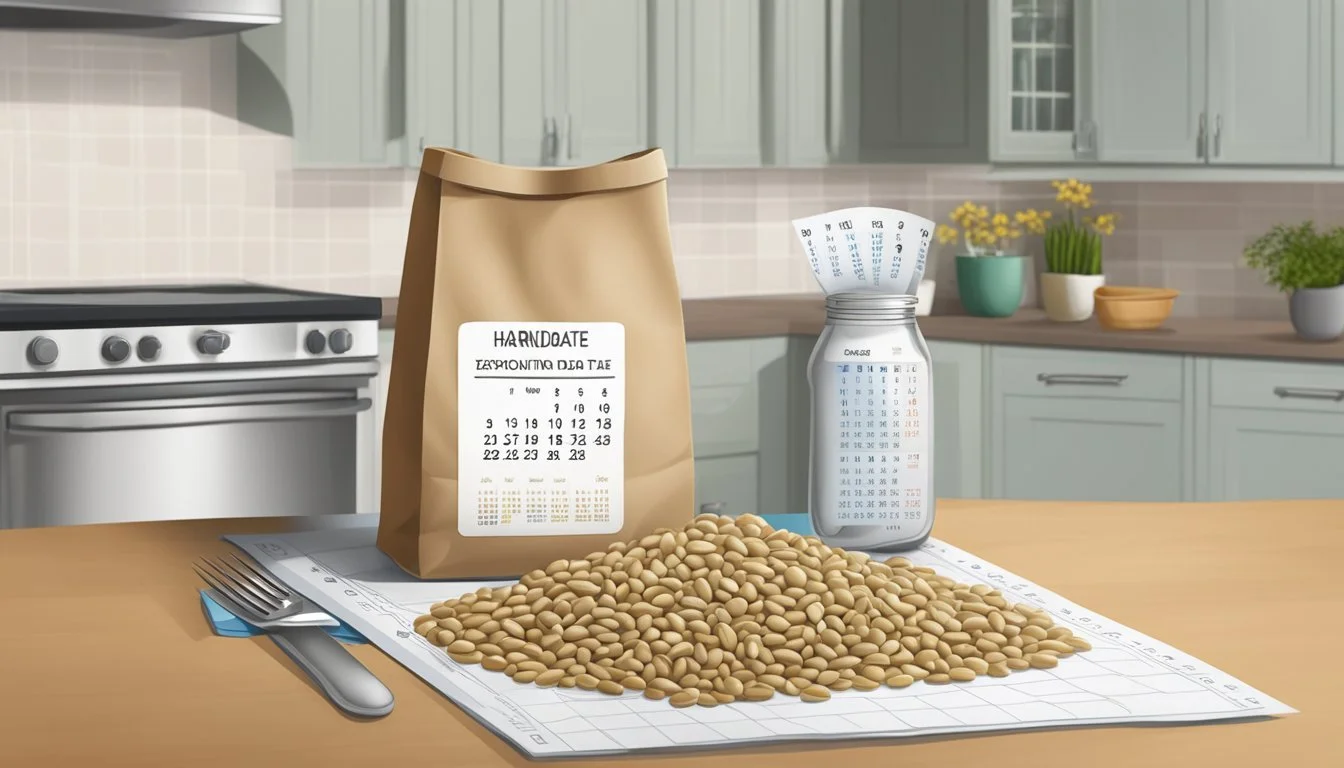How Long Do Haricot Beans Last?
Understanding Shelf Life and Storage
Haricot beans (how long do haricot beans last?), commonly known as navy beans, are small, oval-shaped legumes that boast a remarkable shelf life when stored properly. As a staple in many diets, they offer essential nutrients such as protein, fiber, iron, vitamins, and minerals, including folate, which are integral for maintaining overall health. Incorporating haricot beans into meals can contribute to reduced cholesterol levels, better management of diabetes, and may lower the risk of heart disease thanks to their nutrient-rich profile. Additionally, their high fiber content supports weight management and can play a role in preventing chronic diseases.
To maximize the longevity and preserve the health benefits of haricot beans, proper storage is key. When kept in a cool, dry place in an airtight container, dried haricot beans can maintain their quality for a minimum of one year, often lasting indefinitely. The resilience of these beans in storage makes them a versatile and economical choice for long-term pantry stock. Whether included in soups, stews (What wine goes well with stews?), or salads, haricot beans are not only a nutritious option but also a practical ingredient to have on hand due to their extended shelf life.
Identifying Haricot Beans
Before delving into the preservative qualities of haricot beans, it is essential to know how to correctly identify them.
Characteristics of Haricot Beans
Haricot beans, commonly known as navy beans, are a popular legume recognized for certain distinct traits. They are typically small, oval-shaped, and predominantly white in color, although they can be found in other hues such as red or black. One can identify these beans by their mild flavor and creamy texture once cooked, which make them a versatile ingredient in many culinary applications including soups, stews, and as a primary component in baked bean dishes.
Nutritional Value
When considering the nutritional value of haricot beans, it is important to take into account their high protein and fiber content along with a significant presence of minerals and vitamins.
Benefits of Haricot Beans
Haricot beans are a rich source of protein, providing about 21.5 grams per 100 grams of dried beans. This makes them an excellent choice for muscle building and maintenance. They also offer a good amount of dietary fiber, with 2.4 grams per 100 grams, which is crucial for digestive health and weight management.
These beans are high in iron, contributing to about 6.8 mg per 100 grams. Iron is essential for blood production and energy levels. Furthermore, haricot beans supply valuable minerals such as calcium and potassium, and they are also noted for their folate content, which is important for DNA synthesis and repair.
The presence of these essential nutrients supports overall health and can aid in the prevention of chronic diseases. Vitamins found in haricot beans, though they may diminish over time, initially include B vitamins which are vital for energy metabolism and nervous system function. Additionally, these beans contribute to health benefits like improved blood sugar control and reduced risk of heart disease.
Purchasing Haricot Beans
When buying haricot beans, consumers should focus on the source and the variety to match their culinary needs. Haricot beans, known for their versatility, are available in various forms and types.
Where to Buy
Haricot beans are readily available and can be purchased from:
Grocery Stores: They are a staple in the dry goods section and can be found pre-packaged.
Health Food Stores: For those seeking organic options, these stores often carry a range of high-quality haricot beans.
Online Retailers: Bulk purchases and specific varieties are often easier to source through online platforms.
Varieties of Haricot Beans
The two main varieties of haricot beans to consider are:
White Beans: These are small, oval-shaped beans with a creamy texture, often labeled as navy beans.
Type Description Navy Beans Small, dense, and perfect for stews and soups. Other White Beans Slightly larger varieties suitable for salads and casseroles.
Green Beans: While green beans are a different species, they are not typically referred to in a discussion about dried haricot beans.
Storage Fundamentals
Proper storage is crucial for maintaining the quality and extending the shelf life of haricot beans. This section provides guidelines on keeping both uncooked and cooked haricot beans safe and fresh.
Shelf Life of Haricot Beans
Dried haricot beans, when stored correctly, can remain safe to consume for years but are best used within 1-2 years to maintain optimal flavor and texture. Beyond this period, they may not spoil, but their nutritional value can diminish.
Best Practices for Storing Beans
For maximum longevity, all beans should be kept in a cool, dry place away from direct light and moisture to prevent spoilage and deterioration. The use of airtight containers is important to shield the beans from environmental factors and pests.
Storing Uncooked Beans
Dried haricot beans should be stored in a pantry or cupboard in airtight containers to keep out moisture and pests. If the ambient temperature is consistently below 75 degrees Fahrenheit, the beans will maintain their quality for longer.
Storing Cooked Haricot Beans
Once haricot beans are cooked, their perishability increases. Store them in the refrigerator in covered containers for up to 5 days. For longer storage, cooked beans (how long do cooked beans last?) can be frozen in freezer safe containers or bags for up to 6 months, ensuring the beans are cooled before freezing to minimize the risk of bacterial growth.
Preventing Spoilage
Maintaining the quality of haricot beans is essential to prevent spoilage, which involves understanding the signs of spoilage and the factors that affect bean quality. Proper storage plays a crucial role in extending their shelf life and preserving their texture and flavor.
Signs of Spoilage
Visual Cues: Beans that have become discolored or appear mushy may indicate spoilage.
Texture Changes: Haricot beans that feel slimy or have a noticeable texture change are likely no longer fresh.
Odor: A rancid or off smell is a sign that haricot beans should not be consumed.
Factors Affecting Bean Quality
Heat: Store beans in a cool place, away from heat sources, to prevent deterioration.
Air Exposure: Use airtight containers to minimize exposure to air, which can lead to spoilage.
Moisture: Keep beans in a dry environment to prevent them from becoming slimy or mushy.
Expiration Date: Heed the expiration date as a guideline for when the quality of the beans may start to decline.
Preparing Haricot Beans
Before cooking haricot beans, it is crucial to prepare them properly to enhance their flavor and texture. This preparation ensures the beans cook evenly and removes any impurities.
Preparation Techniques
Initially, one should rinse the haricot beans under cold water to remove any dust or debris. During this process, they should also be inspected for any small stones or damaged beans, which must be discarded. A thorough rinse serves as a preliminary step that prepares the beans for soaking or cooking, ensuring that no unwanted grit or dirt ends up in the final dish.
Soaking Haricot Beans
Soaking haricot beans is a conventional step to shorten cooking time and make them easier to digest. There are two primary soaking methods:
Overnight Soaking: Place the haricot beans in a large bowl and cover them with cold water, using about three cups of water for every cup of beans. Leave them to soak for at least eight hours or overnight.
Quick Soaking: For those short on time, the quick soak method involves bringing the beans to a boil for two to three minutes, then removing them from the heat. Cover the pot and let the beans stand for an hour.
After soaking using either method, it is important to drain and rinse the beans again with fresh water to remove any released starches and to prepare them for cooking.
Cooking Haricot Beans
Haricot beans require precise cooking methods to ensure a creamy texture without becoming mushy. Ideal cooking times differ by the chosen method, from traditional stovetop simmering to the expedited pressure cooker approach.
Cooking Times and Methods
Stovetop: On average, haricot beans take 45 minutes to 2 hours to cook on a stove. They should be soaked overnight, and then simmered in water until just tender. A medium pot, enough water to cover the beans, and occasional stirring will yield the best results.
Slow Cooker: When using a slow cooker, haricot beans can be cooked on a low setting for 6-8 hours or on high for 3-4 hours, until they reach desired tenderness. Pre-soaking is optional but can reduce cooking time.
Pressure Cooker: For those seeking a faster method, a pressure cooker can prepare haricot beans in roughly 25-30 minutes. Pre-soaking is recommended to ensure uniform tenderness.
Recipes Featuring Haricot Beans
Haricot beans are incredibly versatile and can be incorporated into a variety of dishes:
Soups and Stews: These beans are commonly added to enhance the heartiness of soups and stews. They absorb flavors well, making them a substantial addition.
Casseroles: Their creamy texture becomes an asset in casseroles, adding a touch of comfort to the dish.
Baked Beans: Haricot beans are the traditional choice for baked beans, known for their ability to soak up the sweet and savory sauce they are cooked in.
Salads: Cooled, cooked haricot beans can be tossed into salads for a protein boost.
Pasta: They are a healthy protein option for pasta dishes, complementing both light and robust sauces.
Health and Dietary Considerations
Haricot beans offer a myriad of health benefits, thanks to their high content of proteins, fibers, and essential nutrients. These components contribute significantly to a balanced diet, supporting various aspects of health.
Haricot Beans in a Balanced Diet
Haricot beans are a potent source of protein, essential for muscle repair and growth, making them a key component for a balanced diet. They are high in dietary fiber, which is crucial for maintaining good digestive health and can aid in weight management by promoting a feeling of fullness.
Moreover, their fiber content can help regulate blood sugar levels, which is particularly beneficial for individuals managing diabetes. The soluble fiber in haricot beans is also linked to a lower risk of heart disease by helping to reduce cholesterol levels.
Haricot beans boast an array of vitamins and minerals, including folate, iron, and potassium. These nutrients are involved in various bodily functions and contribute to overall health benefits, such as:
Folate: Necessary for cell division and the production of DNA, which is particularly important for pregnant women.
Iron: Vital for the formation of hemoglobin in red blood cells, which carries oxygen throughout the body.
Potassium: Plays a role in maintaining normal blood pressure and heart function.
Consuming haricot beans can be an excellent choice for those seeking a nutritious and healthy food option to support overall well-being and contribute to the prevention of health conditions that benefit from a diet low in cholesterol and high in fiber and nutrients.
Extending the Life of Haricot Beans
To extend the shelf life of haricot beans beyond their typical pantry duration, one can implement proper freezing practices for uncooked beans and utilize leftover cooked beans effectively.
Freezing and Thawing Procedures
Freezing haricot beans is a viable strategy for long-term preservation. To freeze uncooked beans, one should ensure they're properly dried after a process called blanching – briefly boiling and then plunging into ice water. Once dry, they can be spread on a baking sheet, frozen until hard (to prevent clumping), and then transferred to airtight bags. Labeling with the date is essential for rotation purposes.
For thawing, frozen beans should be gradually defrosted in the refrigerator to maintain their texture. To reheat frozen cooked beans, avoid thawing; instead, reheat them directly in a saucepan over low heat, adding a bit of water or broth to prevent sticking and preserve moisture.
Usage of Leftover Beans
Leftover cooked beans can be repurposed by incorporating them into new dishes. One should store cooked beans in an airtight container within two hours of cooking and place them in the refrigerator. They will last 3 to 5 days when stored correctly. Here’s how to effectively use leftover beans:
Salads: Toss them into a salad for added protein.
Soups: Stir into soups or stews for enhanced flavor and nutrition.
Dips: Mash and mix with spices for a quick bean dip or spread.
If one anticipates not using the cooked beans within this time, freezing is an option. Cooked beans should be cooled completely before being portioned into airtight containers or freezer bags, leaving some space to accommodate expansion when freezing. Reheat straight from the freezer when needed.
Frequently Asked Questions
In this section, readers will find precise answers to some of the most commonly posed questions regarding the storage, cooking, and shelf life of haricot beans, ensuring clarity and confidence in handling these beans.
Common Inquiries About Haricot Beans
How should one store haricot beans to ensure maximum shelf life? Haricot beans, also known as navy beans, should be stored in a cool, dry place inside an airtight container. Uncooked dried haricot beans can last up to 1-2 years in the pantry without losing quality, although their optimal flavor is best preserved within 6 months.
Is pre-soaking haricot beans required before cooking? Yes, soaking haricot beans beforehand is essential. They should be soaked in water for at least 8 hours or overnight, which helps to decrease cooking time and improve digestibility. After soaking, they should be drained and rinsed before cooking.
Can haricot beans be frozen? Cooked haricot beans can be frozen successfully. To freeze, one must ensure that the beans have cooled down, and then place them in an airtight container or zip-top bag, removing excess air. In the freezer, they can last for up to six months.
What is the shelf life of cooked haricot beans in the refrigerator? Cooked haricot beans can be refrigerated in a covered container for up to 3-4 days. For best quality, avoid letting the beans sit at room temperature for more than two hours to prevent spoilage.
How can one tell if haricot beans have gone rancid or spoiled? If haricot beans exhibit a sour smell, discoloration, or a slimy texture, they have likely spoiled and should not be consumed. Dried beans that are very hard, shriveled, or have a rancid odor may also indicate spoilage.
What makes haricot beans a healthy choice? Haricot beans are low in fat and high in fiber, protein, and various nutrients. They contribute to a balanced diet and can be a part of various healthy dishes due to their versatility in cooking.
Are canned haricot beans a good alternative, and how should they be stored? Canned haricot beans are a convenient option and can be stored in the pantry until their expiration date. After opening, they should be transferred to a container, refrigerated, and used within 3-4 days.
Does the method of cooking haricot beans affect their nutritional value? The cooking method may slightly influence their nutritional value but generally not significantly enough to outweigh the benefits of consuming them. Cooking beans thoroughly ensures they are digestible and their nutrients are bioavailable.
Conclusion
Haricot beans, also recognized as navy beans, possess a firm shelf life when stored properly. Uncooked, dry haricot beans maintain their quality for up to 2-3 years when kept in a cool, dry place. Beyond this period, they may lose some of their nutritional value, particularly vitamins that degrade over time.
Proper Storage:
Use an airtight container to prevent moisture and pests.
Store in a cool, dark area to preserve nutrients.
When it comes to cooked haricot beans, they should be refrigerated and consumed within 3-4 days for prime taste and nutrition. It is essential for maintaining a healthy dietary intake to consider the freshness of the beans.
Tips for Cooking:
Prior to cooking, check for any bad beans that should be discarded.
Soaking overnight and rinsing can improve cooking results and digestibility.
Haricot beans are valued for their versatility in cooking—from traditional baked beans to soups and salads—and for their contribution to a healthful diet due to their fiber and protein content. Their longevity in storage makes them an enduring staple in many pantries. However, to truly reap the benefits of these nourishing legumes, one should be mindful of storage practices that safeguard the beans' nutritional integrity.












